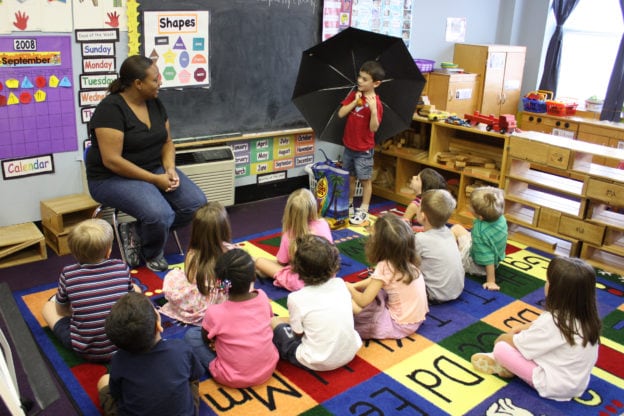
KJIPUKTUK (Halifax) – Enrollment in recently reopened child care centres is often not meeting the 50% threshold necessary for operations across the province to be financially viable.
As a result, there are reports of workers being laid off on Facebook and elsewhere, and within the sector there are grave concerns that some of the centres will not be around come fall. That would be disastrous for an already fragile sector and the working parents who rely on its services.
Child care centres were allowed to reopen last week but for safety reasons enrollment was limited to 50% of full capacity. Meanwhile, the province committed to support the centres financially so that no child care spots would be lost when eventually the economy fully reopens.
According to data from an informal survey by the Canadian Union of Public Employees (CUPE), with more than 300 child care centre representatives responding suggests that centres are operating on average at around 33% capacity. 55% of those who answered the survey said they anticipated layoffs at their centre due to inadequate uptake of available spaces.
See also: Newsbrief: Rural Nova Scotia one big child care desert
All this hits the sector at a time it is already vulnerable. The pre-primary program is set to expand again in the fall, and this will heighten competition for mostly female and underpaid workers.
Margot Nickerson is the president of CUPE Local 4745, representing almost 200 early childhood educators (ECEs) in six centres in HRM.
“Through the CUPE network I know of seven centres altogether, the six in HRM and one in Bridgewater, and out of those there are only three that met the 50% enrollment necessary to be financially viable,” Nickerson says. “This is very alarming. Some of our ECEs have already been laid off, and not just within our locals either, but across the province. We’ve already had centers threatening to close.”
Nickerson says that she has seen a government memo sent late in the day last Friday stating that no additional funding will be forthcoming. Instead the memo suggests that child care centres recruit school age children to fill its vacant spots, something Nickerson believes is not practical.
“When the government initiated its pre-primary program government grants were offered so that centres could retrofit to accommodate younger children, because the four year olds were going into pre-primary. Thousands and thousands of dollars were borrowed by many of our centers to install change tables, buy furniture that was appropriate to a two year old, and now they are told to try to go recruit some school aged children. Most of the directors pointed out that these older kids wouldn’t even be able to fit in the tiny little chairs,” Nickerson says.
So what is to be done?
“We’re asking the government to provide immediate funding. It’s necessary to keep centres open so that when the parents have more confidence, and as the economy opens, these centres that are in trouble now will still be around and spots will not be lost,” Nickerson says.
Earlier we interviewed an ECE who worked in a centre in rural Nova Scotia and who expressed concerns about the safety of both workers and kids. Is there more that could and should be done to reassure concerned parents?
“After the reopening last week we really felt confident about all the protocols that we had to put in place, also because the numbers were smaller than expected in most of our centres. Children and staff were very happy, the people I talked with were feeling really good about it,” says Nickerson.
That said, Nickerson strongly agrees that a lack of sick days and low wages, especially for non-unionized workers, increase COVID-19 related risks.
“Yes, it’s devastating. Some of the non-unionized workers have only three or four sick days for a year Before COVID we heard of workers pressured by their employer to be at work despite not feeling well, because they don’t have replacements,” she says.
See also: Building a successful Early Learning and Child Care System in Nova Scotia
With a special thanks to our generous donors who make publication of the Nova Scotia Advocate possible.
Subscribe to the Nova Scotia Advocate weekly digest and never miss an article again. It’s free!



